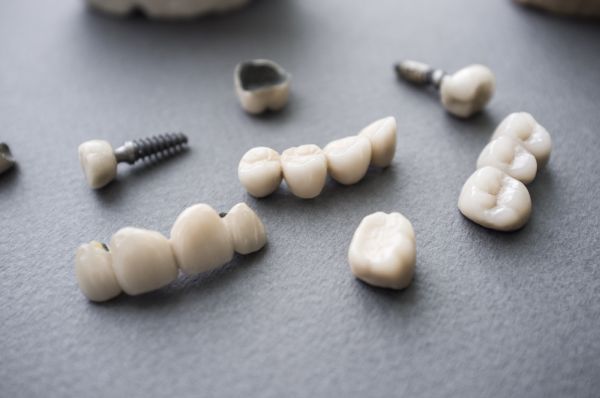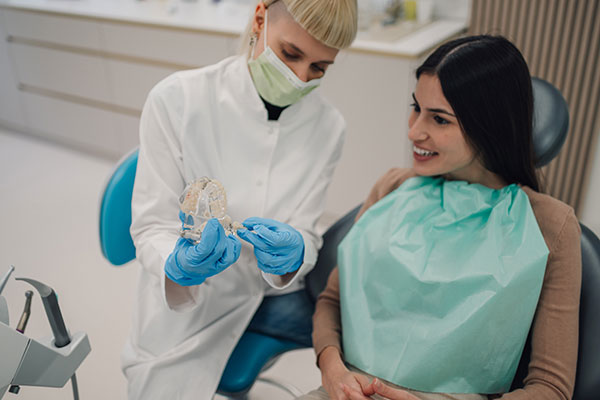Is a Root Canal Necessary Before a Dental Crown?

It is not always necessary to get a root canal when a dentist places a dental crown. These oral prosthetics, also known as caps, are used to protect the visible part of a person's teeth. Crowns are designed to look just like the tooth they are covering, making it very hard to detect when a person has one on a tooth.
The reason why there is a misconception around the need for a root canal prior to crown installation is because it is a common procedure. It is not a prerequisite, however, since there are many reasons a crown might be used that do not require a root canal. We will explore some of these later.
What is a root canal?
A root canal is a procedure performed to remove the soft tissues inside a tooth. It is usually done when a tooth has been infected or damaged to the point the contents of the pulp chamber are exposed to all the things in the mouth like bacteria.
An anesthetic is usually administered during the start of the procedure and the dentist drills a hole into the damaged tooth. Files of different widths are then used to extract the contents of the pulp chamber. Finally, the dentist applies to seal the hole. The tooth is sealed up with a rubber material and a crown is used to provide additional stability. In some cases, the dentist might decide to skip the crown and apply a composite to the tooth instead.
There is little pain involved with root canals despite the many misconceptions indicating otherwise.
Popular uses of dental crowns that do not require a root canal
Here are some common uses of dental crowns that are done without a root canal:
1. Improving the look of a discolored tooth
Nowadays, teeth whitening treatments are quite effective, but they do not eliminate all types of stains. Certain stains, like those caused by tooth decay or overexposure to fluoride, cannot be removed with whitening treatments. Crowns are often used in these instances to cover up the discolored tooth and improve the appearance of a patient's smile.
2. Chipped teeth
Some breaks and chips do not open up the pulp chamber and these do not require a root canal. Since the enamel is often broken off during such injuries, the tooth needs to be protected by a crown to prevent sensitivity. Once the crown has been installed, it will be virtually impossible to tell which tooth has been restored.
3. As anchors for dental bridges
When a person opts for dental bridges as a tooth replacement option, the two teeth closest to the gap created by the missing teeth are usually fitted with crowns. This strengthens them, making them better anchors for the bridge.
Root canals and crowns do not always go together
Getting a root canal does not always require getting a crown and vice versa. Stop by our clinic and explore all your alternatives if you think you need either of these treatments.
Let's get started…
Request an appointment here: https://thechesterfielddentist.com or call Chesterfield Dentist at (804) 412-0867 for an appointment in our Chester office.
Check out what others are saying about our services on Yelp: Read our Yelp reviews.
Recent Posts
As a child’s mouth and teeth develop into adolescence, it may become apparent that there are problems with alignment or spacing. Invisalign® for teens presents an alternative to traditional metal braces but without sacrificing the quality of results of corrective treatment. The specifics of a teen’s condition may impact the eligibility of this alignment option,…
Gum disease is a common yet serious oral health issue that can cause discomfort, damage, and even tooth loss if left untreated. With the right gum disease treatment, patients can not only stop the infection in its tracks but also restore the patient's overall oral health. Knowing the true impact of gum disease and how…
A popular way to straighten teeth without traditional braces is Invisalign®. Clear aligners are available for both adults and teenagers who are interested in improving the alignment of their teeth and improving the appearance of their smiles. The aligners are not visible in the mouth and do not have metal components that can irritate sensitive…
If you are a teenager whose dentist recommends Invisalign to straighten your teeth, you may wonder what the product is. Many dentists advise Invisalign® for teens as a discreet and reliable method of treating crooked teeth. However, you may only be familiar with traditional braces. Invisalign is a different way to fix malocclusions or imperfect…


